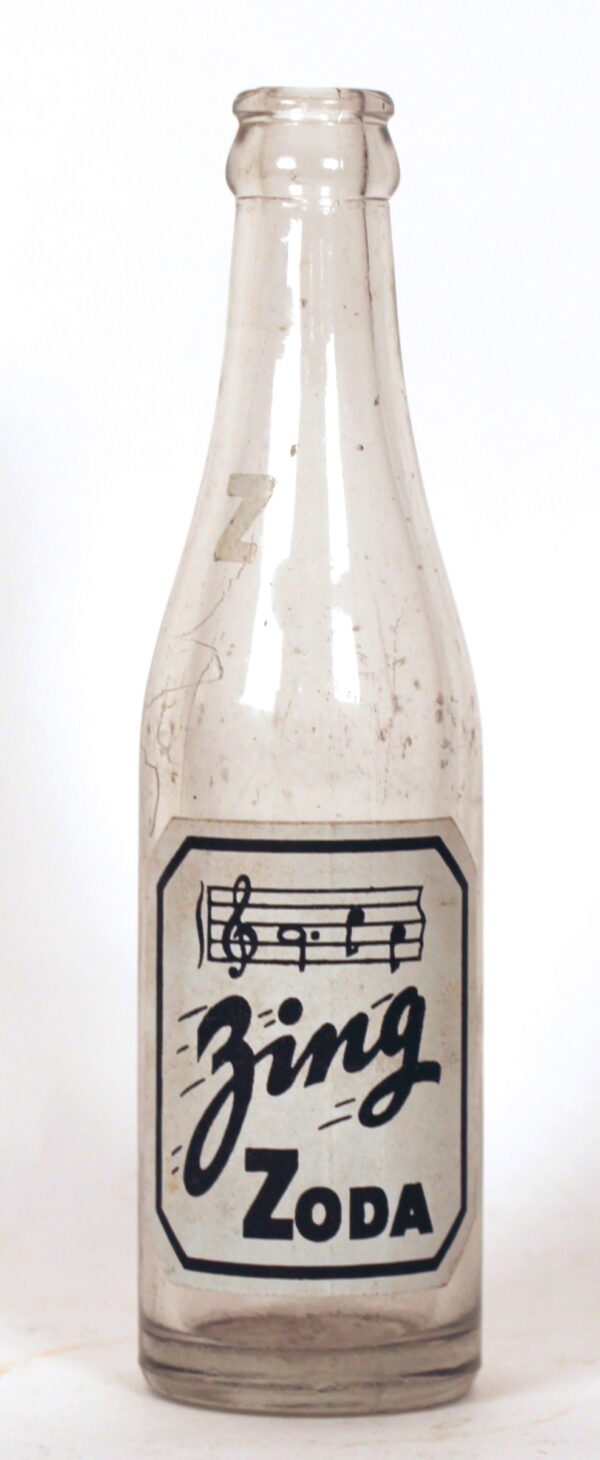
Zing Zoda Painted Label Soda Bottle, Millstadt, IL. Circa 1940
This is a very rare Zing Zoda ACL Soda Bottle from the Kay-B Company in Millstadt, Illinois. Circa 1940.
CONTACT US FOR A FREE APPRAISAL OF YOUR ANTIQUE ADVERTISING COLLECTIBLES!
CONTACT US FOR A FREE APPRAISAL OF YOUR ANTIQUE ADVERTISING COLLECTIBLES!
CONTACT US FOR A FREE APPRAISAL OF YOUR ANTIQUE ADVERTISING COLLECTIBLES!
Antique advertising bakery collectibles from the late 1800’s and early 1900’s consist primarily of tin or wood boxes for breads, biscuits, crackers, cookies and other products. Flour Mills were vital to the bakeries and also advertised on signs, trading cards and the side of buildings.
For years, hometown bakers and general stores offered soda crackers in large barrels or wood crates for consumers to dig out their favorite crackers and put in their own paper bag. Soda crackers were a main part of the everyday diet made from flour, yeast and shortening. However, it was considered better when someone got “the top of the barrel” crackers because by the time consumers reached the bottom, crackers were often dirty, soggy and stale due to humid air and from not being sealed.
Eventually bakers developed biscuit tins and cardboard boxes to improve product freshness and keep the food sanitary. The companies used sealed paper linings inside the packages to keep crackers and baked goods fresher longer. Advertisers promoted their company logo and images on the tin containers and boxes to draw attention. People would keep the boxes after the crackers were used up for other storage uses. Many of the vintage biscuit boxes are common bakery collectibles still found today in many shapes and sizes.
The products carried in the biscuit boxes ranged from the original soda cracker that looks like today’s saltine and others that resembled a dinner biscuit made from flour and butter. These dinner biscuits were called “soda biscuits” or “baking soda biscuits” and were considered different from the original tradition of a crisp cracker.
National Biscuit Co. (now Nabisco) was one of the first companies to mass-produce and package their baked products as more sanitary and fresher than the cracker barrel. In the 1920’s, the company introduced a packaged biscuit called Uneeda and put them in tin boxes and small cardboard boxes with the “in-er-seal” waxed paper lining. National Biscuit used the slogan “Lest you forget, we say it yet, Uneeda Biscuit.”
The boxes featured a biscuit boy who wore a yellow raincoat and represented dry crackers even in the rain. The Uneeda boy became a popular face of the product and was one of the most recognizable ad images in the early 1900’s. Its interesting name Uneeda was a popular draw with consumers.
Other companies imitated the Uneeda brand with names such as “Ulika”, ”Uwanta” and “Iwanta” Biscuit brands. However, National Biscuit Co. sued the others and they put a stop to more than 200 cases of copyright infringement with these competitive bakeries. Many of the Uneeda advertising pieces are considered valuable antique bakery collectibles.

This is a very rare Zing Zoda ACL Soda Bottle from the Kay-B Company in Millstadt, Illinois. Circa 1940.
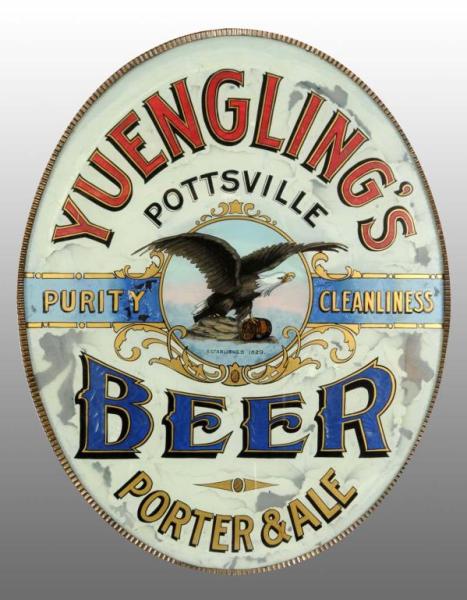
Photographed is a very rare reverse on glass corner beer sign from the Yuengling’s Brewery which is in Pottsville, Pennsylvania.

This is an incredibly colorful and bold tin corner sign from the York, Pennsylvania Brewing Company with the proprietor’s name on it, Karl Katz. This sign is circa 1900.

A nicely framed tin sign from the Taylor and Williams Distilling Company in Louisville, Kentucky advertising their Yellowstone brand of whiskey. Circa 1905.
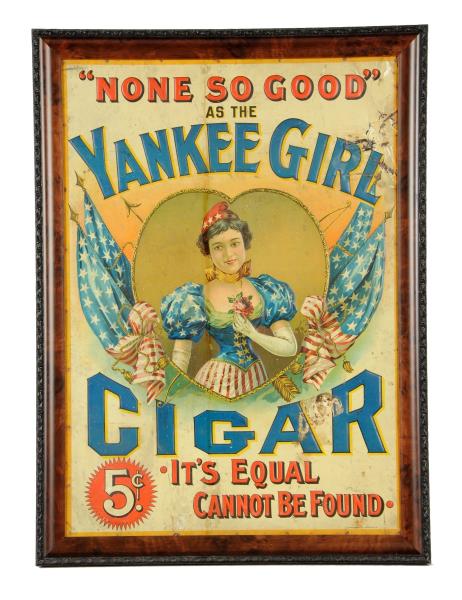
Featured is a beautiful tin sign from the Yankee Girl brand of cigars, circa 1900. The sign has a price of 5 cents per cigar, and boldly claims “It Equal Cannot Be Found”.
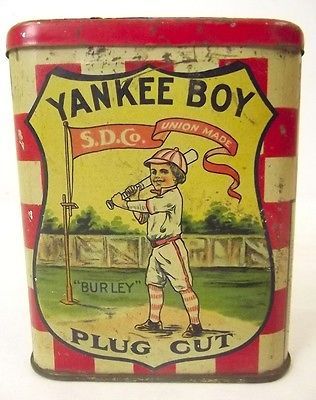
Yankee Boy Pocket Tobacco Tin, featuring a baseball player called Yankee Boy Brand. This brand was fairly popular 100 years ago and pocket tobacco tins are highly collected today. Circa 1917.
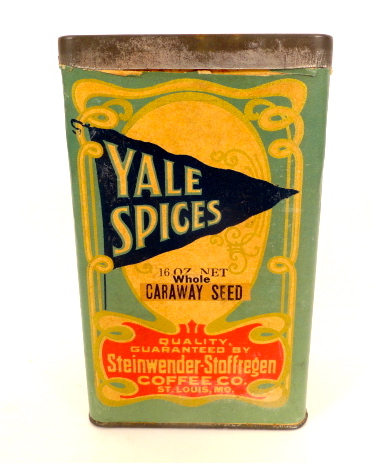
This is a “Yale Spice” tin from the Steinwender-Stoffregen Coffee and Spice Co. based in St. Louis, MO, 1915.

This is a Monkey Brand Roasted Coffee General Store Bin made of tin from the Steinwender-Stoffregen Coffee and Spice Co. based in St. Louis, MO, circa 1910. The Steinwender-Stoffregen Company was known for their flagship Yale brand of coffee in the early 1900’s. However, the Monkey brand was a top seller also for the company, but paled in comparison to the sales of their Yale brand. The Steinwender-Stoffregen Company won an award as the best coffee at the St. Louis World’s Fair Exposition in 1904.
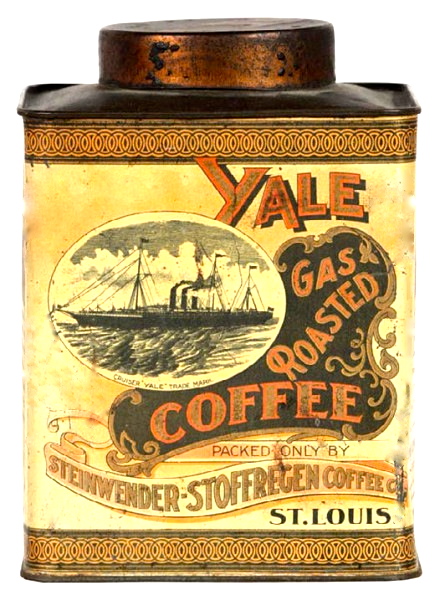
This is a Yale Gas Roasted Coffee tin from the Steinwender-Stoffregen Coffee and Spice Co. based in St. Louis, MO, 1905.

Pictured is a beautiful Wunder Beer serving tray from the Wunder Brewing Company in San Francisco, California. Circa 1905. The Wunder Brewing Company was at the corner of Greenwich and Scott streets and was in existence from 1898-1909.